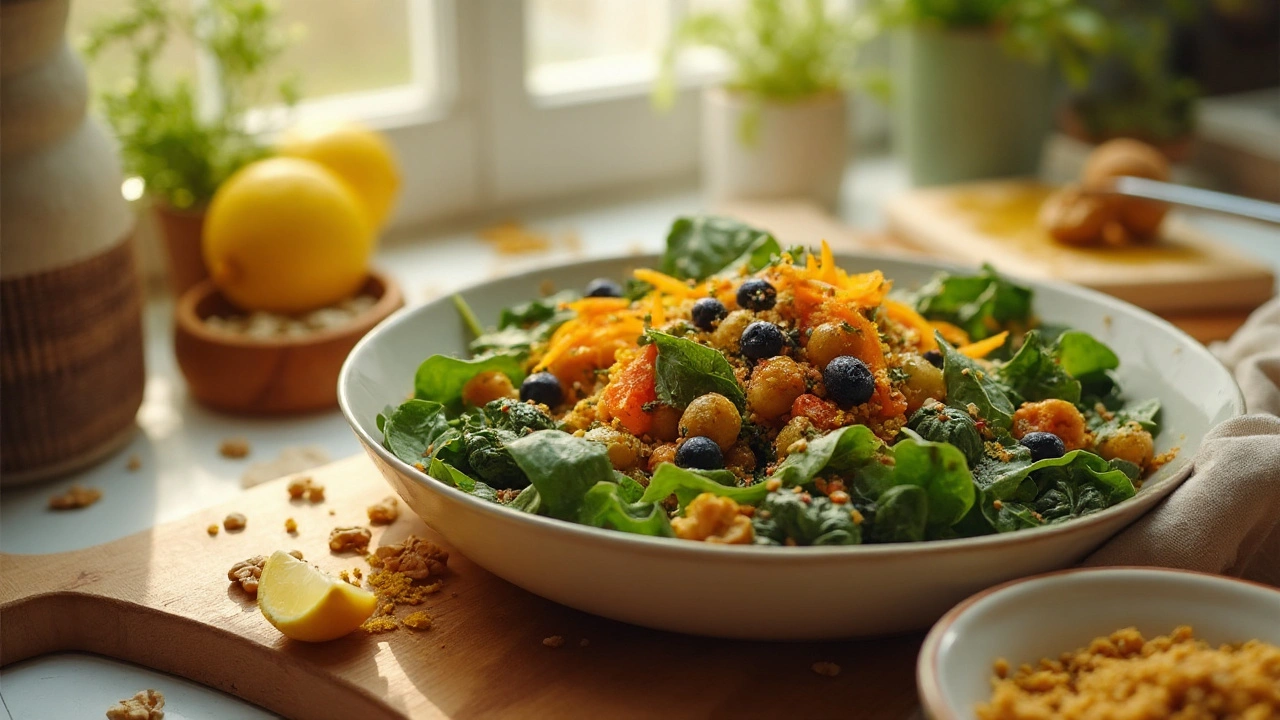Inflammation Diet: Simple Foods to Calm Your Body
Feeling achy or sore? What you eat can make a big difference. Certain foods fire up inflammation, while others help shut it down. Below you’ll find the basics of an inflammation‑friendly diet that anyone can follow without spending hours in the kitchen.
Key Anti‑Inflammatory Foods
Start with these staples. They are cheap, easy to find, and packed with compounds that calm your immune system.
- Berries – Blueberries, strawberries, and raspberries have antioxidants called anthocyanins that fight inflammation.
- Fatty fish – Salmon, sardines, and mackerel supply omega‑3 fats. Aim for two servings a week.
- Leafy greens – Spinach, kale, and Swiss chard are rich in vitamins C and K, both anti‑inflammatory.
- Nuts and seeds – Walnuts, almonds, chia, and flaxseed give you healthy fats and fiber.
- Olive oil – Use extra‑virgin olive oil for cooking or dressings. It contains oleocanthal, a natural anti‑inflammatory agent.
- Turmeric and ginger – These spices have curcumin and gingerol, which lower swelling. Add them to soups, smoothies, or stir‑fries.
- Whole grains – Swap white bread for brown rice, quinoa, or oats. They keep blood sugar steady, which helps control inflammation.
Try to keep processed snacks, sugary drinks, and fried foods low. Those items raise inflammation markers quickly.
Putting It All Together: Easy Meal Plan
Now that you know what to eat, here’s a quick daily plan you can copy. Adjust portions to fit your needs.
Breakfast: A bowl of oatmeal topped with blueberries, a sprinkle of flaxseed, and a drizzle of honey. Pair with a cup of green tea for extra antioxidants.
Mid‑morning snack: A handful of almonds and an apple.
Lunch: Spinach salad with grilled salmon, cherry tomatoes, cucumber, and a dressing made from olive oil, lemon juice, and a pinch of turmeric.
Afternoon snack: Carrot sticks with hummus or a small cup of plain yogurt mixed with sliced strawberries.
Dinner: Stir‑fried broccoli, bell peppers, and snap peas in ginger‑garlic sauce, served over quinoa. Add a side of roasted sweet potatoes for extra fiber.
Evening wind‑down: A cup of chamomile tea or warm milk with a dash of cinnamon.
Notice how many of the foods repeat across meals. That’s the point – consistency beats variety when you’re trying to lower inflammation.
If you’re busy, prep ingredients on the weekend. Wash and chop veggies, cook a batch of quinoa, and portion out nuts. That way you only need to assemble meals during the week.
Drink plenty of water, too. Staying hydrated helps your body flush out toxins that can trigger inflammation.
Finally, listen to your body. If a certain food still makes you feel swollen or achy, skip it. Everyone reacts a little differently, and the goal is to find the combo that works best for you.
With these simple foods and a repeatable meal plan, you can start easing inflammation today without fancy cooking skills or expensive supplements.
Top 10 Anti-Inflammatory Foods to Boost Your Health
Discover the ten most powerful anti-inflammatory foods, why they matter, and practical ways to add them to your meals for lasting health benefits.

